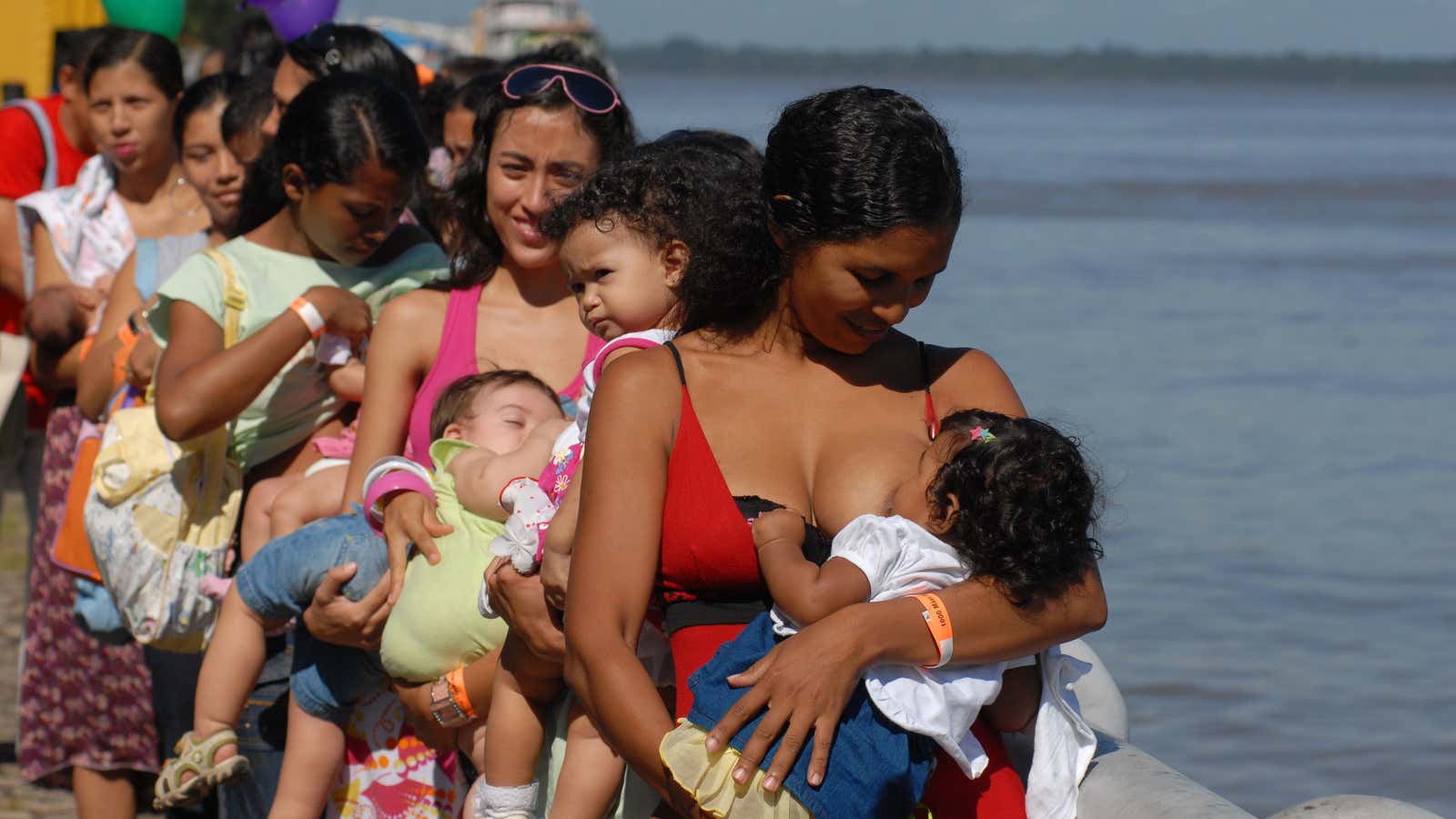Humans are mammals. Therefore, they can breastfeed their offspring, and they should. There is no shortage of evidence of the tremendous health benefits that come with breastfeeding—for both the baby and the mother. The World Health Organization (WHO) recommends exclusively breastfeeding babies until they are six months old, and continuing partial breastfeeding for the first year.
Breast milk is linked to lower risks for children for everything from neurological development problems to diabetes. According to UNICEF, “an exclusively breastfed child is 14 times less likely to die in the first six months than a non-breastfed child.” Universal adoption of breastfeeding in low- and middle-income countries could prevent the death of an estimated 823,000 children under two years old, according to a study by the Australian National University. Breastfeeding also benefits mothers, with a staggering impact in reducing likelihood of breast cancer.
So why was the United States so reluctant to ratify a UN resolution on promoting breastfeeding worldwide and limiting advertisements for baby formula?
One likely reason: Breast milk is free! That’s great for mothers, and terrible for manufacturers of baby formula. In defense of formula and its makers, the US also reportedly threatened Ecuador with trade sanctions in retaliation for advancing the resolution.
Breastfeeding is increasingly popular in the United States. Nevertheless, formula is still an estimated $47 billion global industry, according to Euromonitor, and has been growing steadily. In 2018, it grew 4%, particularly in low- and middle-income countries.
What’s so bad about formula anyway?
Most mothers can breastfeed, but formula is a helpful substitute for women who don’t produce enough breast milk. It is not an ideal replacement, however. Formula doesn’t offer the same benefits in terms of immunity building, for instance.
The main concern isn’t whether breastfeeding should be supplemented with formula, but what happens when formula becomes a substitute for breast milk entirely. When breastfeeding mothers feed their babies exclusively with formula, they quickly stop producing breast milk, making it impossible to revert back. This makes formula particularly problematic for poor mothers, who may not be able to buy sufficient amounts of the product, and end up watering it down or feeding the child smaller quantities, which then leads to malnourishment.
This cycle has been notoriously promoted by some formula manufacturers which market formula as equal to or even better than breast milk. Such companies have lobbied to have their product included among the essential recommendations given by hospitals or health care personnel to new mothers.
The risk of reliance on formula is so concerning that the World Health Organization opposes distributing formula even in emergency settings, such as wars, or natural disasters. These are situations during which it has been common to solicit formula donations for the affected countries, says Maaike Arts, an early childhood nutrition specialist with UNICEF. However, the current recommendation is to refuse such aid and instead focus on finding ways to help women continue breastfeeding (like creating safe, private spaces for breastfeeding). Such practices eliminate the risk of mixing formula with contaminated water.
Even in case of orphaned babies, Arts says it is better to encourage wet nursing before resorting to formula. Similar approaches have been successful in refugee camps, for instance, as well as in post-earthquake Ecuador—which is one of only 23 countries where more than 60% of children under six months are exclusively breastfed.
